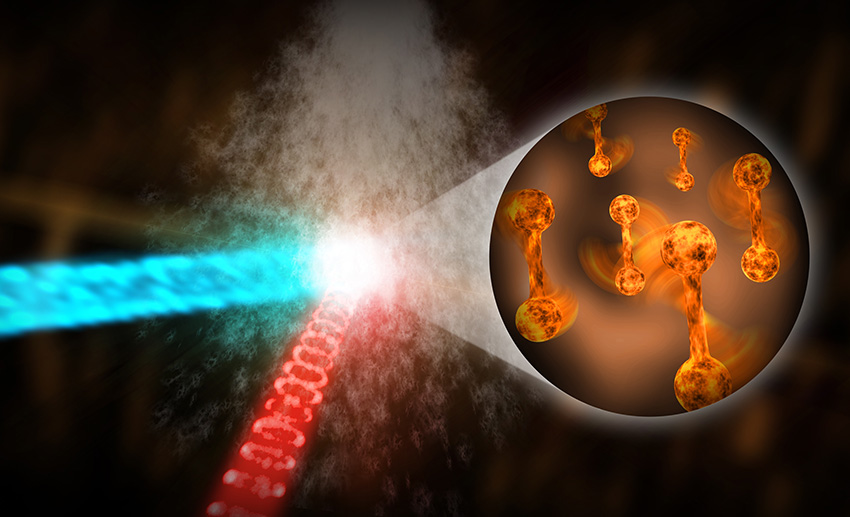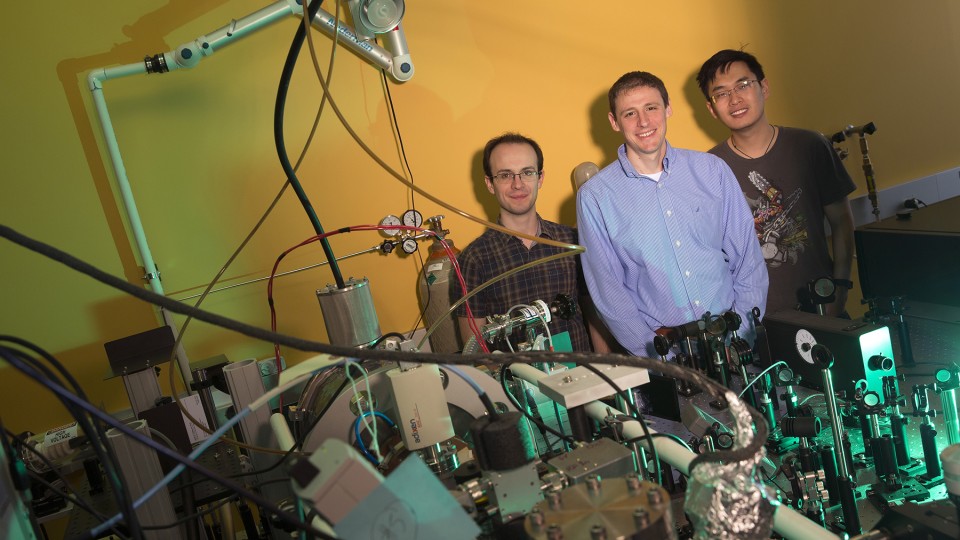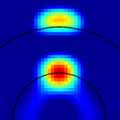We have an open position for a Postdoctoral Scholar.
Applicants with a PhD in Physics, Chemistry, or a related field and an excellent track record are encouraged to apply. Please submit your CV and the contact information of at least two references to Prof. Martin Centurion (martin.centurion@unl.edu), with the words “Postdoc Application” in the subject line.
Virtual Tour
Our lab took part in creating a 360 virtual tour of the Department of Physics & Astronomy. The Office of Graduate Studies funded the video in which prospective students can "visit" via their smartphone or computer. Skip ahead to minute 1:35 to see our lab.
Use the YouTube app on your phone or Firefox and Chrome browsers on your computer. Utilize the full 360 degree space by moving your phone or dragging your desktop cursor up-and-down and side-to-side.
Latest Research
Ultrafast Diffractive Imaging reveals coherent motion that persists after the molecule relaxes to the ground state
We have observed, experimentally and theoretically, the dynamics that result from bond-breaking in a complex molecule. We determined the structure of a short-lived intermediate state and followed the coherent motion of the atoms that continues after molecule relaxes to the electronic ground state.
Read the full publication describing the results

Imaging CF3I conical intersection and photodissociation dynamics with ultrafast electron diffraction
Our results on imaging a nuclear wavepacket dynamics at conical intersections have been published in Science.
More information is available on the news and publications pages.
Read the Nebraska today press releaseYang, Centurion and team featured in APS Physics and Office of Science Highlights
With an ultrafast “electron camera” at SLAC National Accelerator Laboratory, we have made the first direct snapshots of atomic nuclei in molecules. The news was featured on the front page of APS' Physics website and in several press releases.
APS Physics ViewpointRead the SLAC Press Release
Read the Nebraska Today Press Release


Department of Energy Basic Energy Sciences Highlight
Our recent results on Femtosecond Electron Diffraction have been chosen as a Science Highlight "Capturing Molecular Motion with Relativistic Electrons" by the Department of Energy – Basic Energy Sciences.
Read the BES HighlightPhysicists use electrons to record more 'frames' of atomic motion
We have finally achieved femtosecond resolution in electron diffraction from molecules in the gas phase. The experiments were done at SLAC with a relativistic electron gun. The results were picked up by several news agencies. More information is available on the News page.
Read the Nebraska Today Press Release

Ultrafast imaging of isolated molecules with electron diffraction
The Journal of Physics B: Atomic, Molecular and Optical Physics published a Topical Review of "Ultrafast imaging of isolated molecules with electron diffraction" in February 2016.
Read the review on Digital CommonsSPIE Features "Sub-picosecond imaging of short-lived molecular structures"
In an article for the International Society for Optics and Photonics (SPIE), we discussed the ultrafast electron diffraction and femtosecond laser pulses behind our research and how it can lead to unprecedented areas of imaging resolutions.
SPIE Newsroom